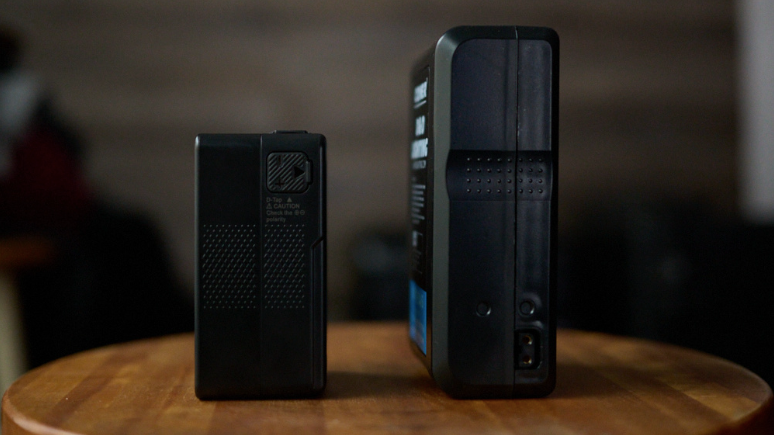
From Camera Batteries to Electric Cars: How the Lithium-Ion Battery Rose to Dominance
It's hard to imagine a world without lithium-ion batteries. After decades of dealing the shortcomings of alkaline and Ni-Cad power storage mediums, lithium-ion battery technology saved the day with a lightweight, high-density alternative that keeps us connected and mobile for days at a time.
Lithium-ion batteries revolutionized battery technology and are essential to the growing electric vehicle market. At a pedestrian level, lithium-ion technology enables impossibly thin and light laptops, tablets, and smartphones while ensuring screens stay bright for a full day's work or more.
Mobile scooters for the disabled can transport people further and faster without the excessive weight of traditional lead-acid batteries slowing them down. Photographers can happily snap away without stressing about where the closest power outlet is.
Batteries don't weigh as much or take up as much space in their kit as they used to, which means more versatility because no lens gets left behind.
Lithium-ion batteries changed the world, but how did it all start? Where do the materials come from? And how are lithium-ion batteries created? Read on to learn about the history of lithium-ion batteries and how they came to dominate in a world craving portable energy.
A Brief History of the Lithium Ion Battery
The first experiments with lithium as a power storage medium happened as far back as 1912, but the oil crisis of the 1970s inspired the work for a new battery type.
An English chemist named Stanly Whittingham dreamed of a fossil fuel-free future and started working on a new idea he had for a high-density battery with a fast charge rate.
The first lithium batteries used a combination of lithium metal and titanium disulfide at the electrodes. Unfortunately, the early prototypes’ propensity for catching fire soon put them out of contention.
A physicist and engineering professor at the University of Texas named John Goodenough expanded on Whittingham's work in the 1980s. Goodenough used lithium cobalt oxide as the cathode, which doubled the battery's energy potential.
Five years later, Akira Yoshino, a Japanese chemist at Meijo University in Nagoya, Japan, took the idea further by experimenting with petroleum coke, a carbonaceous material that enhanced stability for a better-performing battery. It was Yoshino's work that led to a viable lithium-ion battery prototype.
Lithium-ion batteries grew in popularity during the 1990s, showing up in more and more devices because of their lightweight, high-density energy storage, and excellent safety record.
Advantages of Lithium-Ion Batteries
Lithium is an extremely light metal with excellent electrochemical potential and high energy density compared to nickel-cadmium batteries. Lithium-ion also has a higher energy potential of 3.6 volts (compared to a Ni-Cad’s 1.25V per cell), so a battery with a single cell can easily power a smartphone.
A lithium-ion battery does not need priming and only requires a standard charge before use. Another standout feature is that lithium-ion batteries have a much lower discharge rate than nickel-cadmium batteries, making them much easier to store and manage.
Ni-Cad batteries and their dreaded memory effect require extra diligence in battery management to ensure they can always carry a full charge. Lithium-ion batteries have no such limitations.
Where Does Lithium Come From?
As the demand for lithium batteries grows, largely fueled by the expanding electric vehicle market, the world will continue to need increasing amounts of lithium. So, where does lithium come from, and what processes does it go through before it reaches your camera battery or electric vehicle?
What is Lithium?
Lithium is a naturally occurring element (Li) and a malleable and lightweight metal. It possesses such a low density that it will float on water and is soft enough to cut with a knife. However, it's such a highly reactive alkali that it will burst into a bright red flame if you do try to float a piece.
Lithium mining extracts the metal from hard rock and brine, with the largest sources found in aquifers under salt lake deserts. Brine harvesting is the most common extraction method, but the extracted lithium is a lower grade than that sourced from hard rock mining.
Higher grade lithium from hard rock increases expenses because you need geological surveys and expensive mining equipment to extract it.
Lithium is found in trace amounts in challenging terrains, making it a challenging and costly metal to mine regardless of the method and location.
Lithium Mining Methods
The world produces around 85,000 tons of lithium annually, and almost 60% goes into battery production. The volume of lithium production has increased by 335% from 2008 to 2018, and the estimated quantity of lithium stores is around 14 million tons [source].
In the salt deserts of South America, brine is pumped from underground aquifers into a holding pond. As the water evaporates under the sun, it leaves a salty residue that is shipped off to the processing facility to extract the lithium.
More traditional ore mining methods are used in hard rock mining, where the lithium ore is dug out from open pits before the extracted rock is crushed and processed. Lithium ore mining is common in Australia, while places like Chile and Argentina extract the metal from salt deserts called salars.
How are Lithium-Ion Batteries Made?
All batteries, including your favorite V-mount camera battery, work by moving electrons between anodes and cathodes. The anode loses electrons while the cathode gains them. In lithium batteries, electrons are freed from lithium ions to create voltage.
Batteries are created from four components: an anode, a cathode, an electrolyte, and a separator. The battery generates electricity through chemical reactions in lithium. Because lithium is so active in its natural form, a combination of lithium and oxygen is used to create lithium oxide for the cathode.
The cathode where the lithium oxide is stored is the active compound of the battery and plays the most important role in defining the characteristics of the battery, such as its capacity, energy density, and voltage.
When a conducting circuit connects the anode and cathode, the battery enters a discharge state. Positively charged lithium ions flow through the electrolyte from the anode back to the cathode while the electrons move through the circuit before joining the ions back at the cathode.
The electrolyte plays a critical role because without it, you would not have a usable battery. Electrons have a negative charge, and as they move through the circuit, you need a way to balance the negative charge movement with positively charged ions.
So, while negatively charged electrons move through the wire, a corresponding volume of positively charged lithium ions must travel through the electrolyte. This transfer is handled by the cathode, with the chemical reaction pulling in positively charged ions from the electrolyte.
You still need a way to prevent all the released ions from moving freely through the electrolyte, so a semi-permeable barrier is installed between the two electrodes. Without this barrier, ions would end up covering both electrodes and preventing the flow of electricity.
In non-rechargeable batteries, the flow of electrons from the anode to the cathode is one-way. The battery is done when the build-up of reaction products stops the process from continuing and rendering the battery useless.
Lithium-ion batteries use electrode materials that allow the chemical reaction to be reversed, sending positive ions and electrons back into the anode to give it a new lease on life.
Self-Discharge and How to Prevent Battery Degradation
Your battery gauge will show a minor reduction in capacity if there is some time between recharging your V-mount battery and its next use. This loss is because of a lithium battery's self-discharge rate, which is around 2 - 3 percent per month. Still, it’s a significant improvement from the 10% self-discharge typical with Ni-Cad batteries.
A lithium-ion V-mount battery will have enough juice to keep you productive after three months in storage. In comparison, a Ni-Cad will have lost almost half its capacity and will be slow to recharge as well.
While lithium-ion camera batteries offer significant improvements in self-discharge rates, there is currently no way to entirely eliminate the chemical reaction, even when they are not in use. It's the internal reactions that cause the electrical density of the battery to deplete while in storage.
You can get more mileage and safety out of a lithium-ion camera battery by managing its storage. Monitor your stored V-mount battery’s charge and make sure it maintains at least a 40 percent charge. Develop a battery management procedure that ensures batteries stored for 6 months or more are checked regularly and topped up as needed.
The voltage of the cells of a lithium-ion camera battery that drops below 40 percent will reduce to around 2 volts. This state can cause the battery to overheat, become unstable, and suffer further degradation from electromechanical stress. Fortunately, lithium-ions can be stored for around ten years without impacting their storage capacity, provided you don’t expose them to temperature extremes.
Do you need professional advice on your V-mount camera batteries, or are you after high-quality camera batteries that will last the distance and keep you productive all day? Get in touch or visit our website today to learn more.
www.dandolighting.com
Visit the Blog

Leave a comment